Shake violently! A strong earthquake of magnitude 7.3 in Japan has injured 100 people.
On the evening of 13th local time, a strong earthquake of magnitude 7.3 occurred in the eastern waters of Fukushima, Japan, with a focal depth of 55km. After the earthquake, the Japan Meteorological Agency did not issue a tsunami warning. According to Japanese media reports, the earthquake has caused more than 100 injuries in Fukushima Prefecture and Miyagi Prefecture.
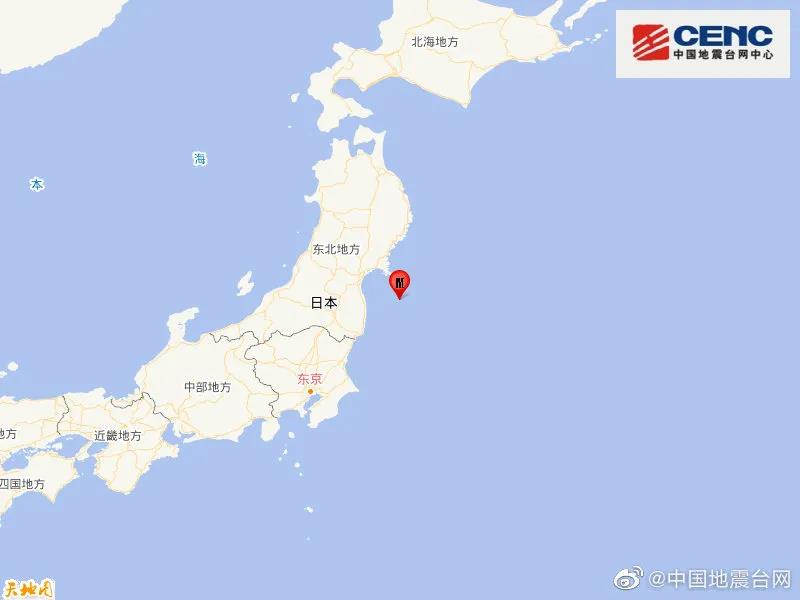
Japan has a strong sense of earthquakes.
There are many earthquakes in Japan, and many people say that this earthquake is the strongest since the "March 11" earthquake in 2011. According to the scene picture, when the earthquake struck, many places shook obviously.
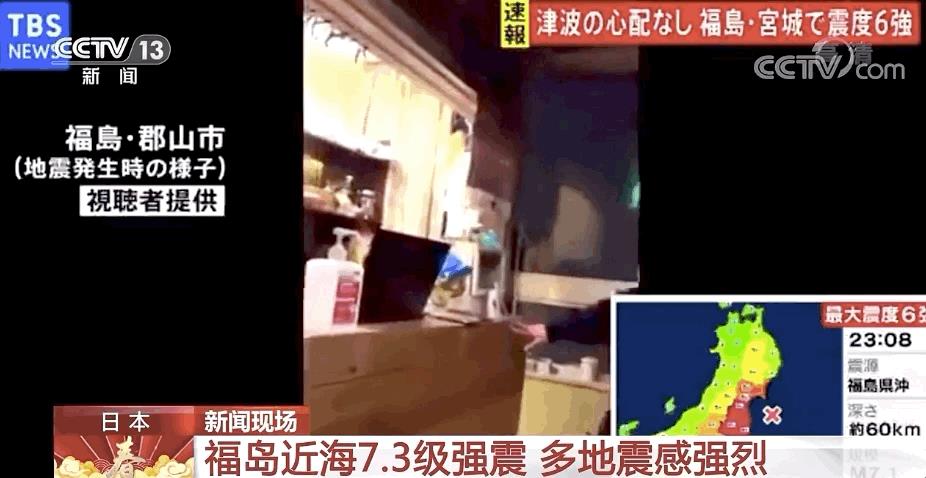
△ This picture was taken in Koriyama City, Fukushima Prefecture at the time of the earthquake.

△ At the time of the earthquake, a hotel in Iwaki City, Fukushima Prefecture.
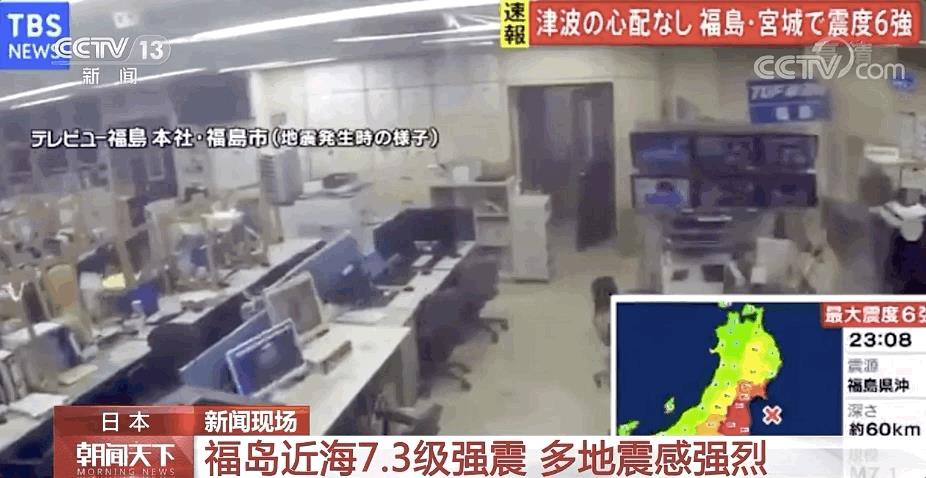
△ When the earthquake struck, the scene inside a TV station in Fukushima City, Fukushima Prefecture.
Judging from this picture taken by the camera on a local TV station building in Fukushima Prefecture, the shaking lasted for more than 1 minute when the earthquake occurred.
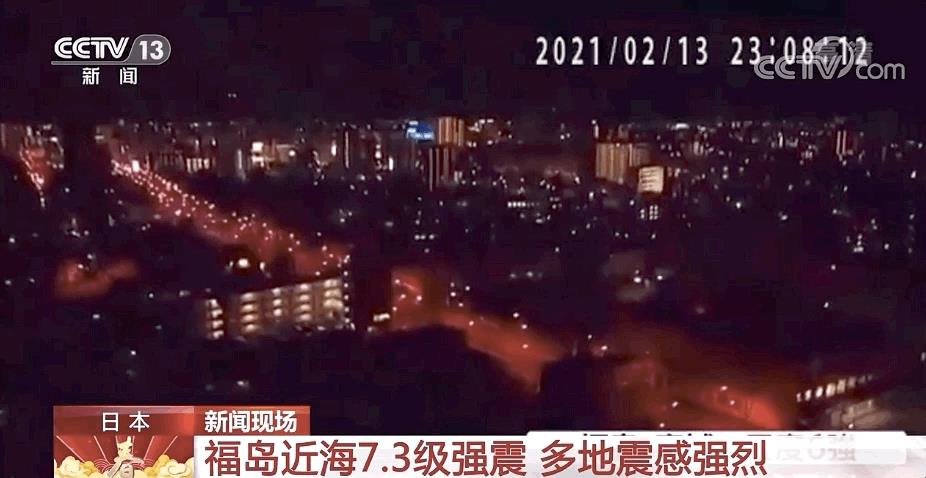
The road in Sendai City, Miyagi Prefecture, which is adjacent to Fukushima Prefecture, is also shaking badly.
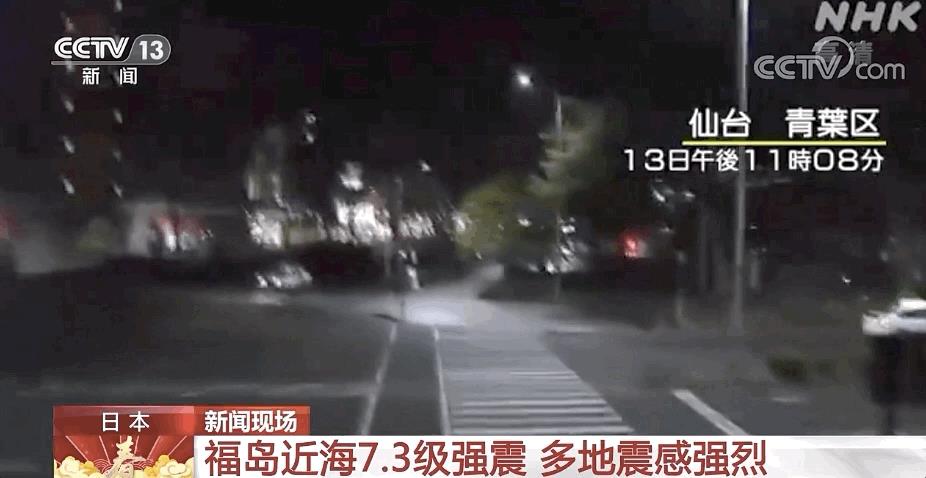
The office of the Tokyo Broadcasting Corporation in Sendai City Branch was also in a mess due to strong shaking.
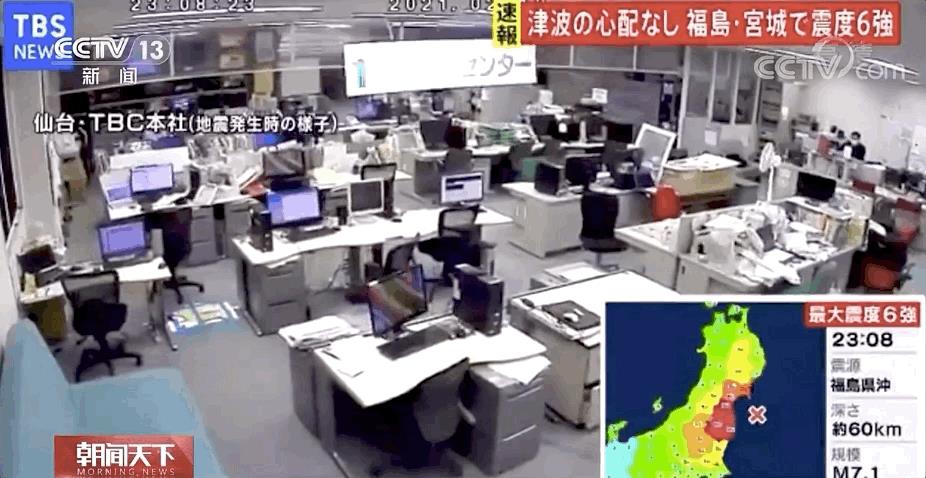
The earthquake caused a large area of power failure and water cut, and some rail transit was suspended.
The earthquake caused large-scale power and water cuts in many places in Japan, and at least 10 thermal power generating units in Northeast China suspended power generation. Early warning of geological disasters was issued in the area where the epicenter was located, and landslides have occurred in Fukushima Prefecture.
Some sections of the Shinkansen in Tohoku, Shangyue, Hokuriku and Tokaido in Japan were temporarily suspended due to power outages. The pipeline of JR station in Fukushima City, Fukushima Prefecture was damaged and leaked a lot.
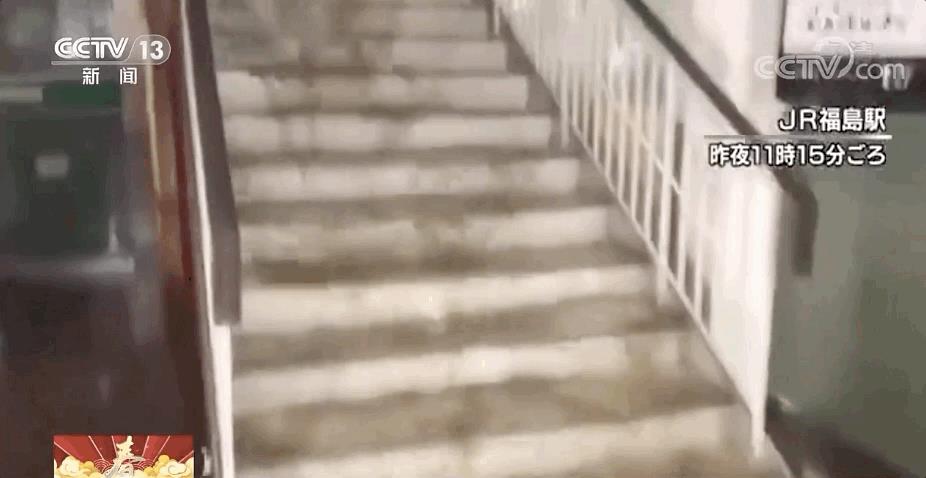
Some residents of Fukushima City went to convenience stores to buy materials urgently after the earthquake.
The maximum magnitude of this earthquake is "Top 6" or the aftershock of "March 11th" earthquake.
The largest earthquake was "Top 6", and nearly half of Fukushima Prefecture and the whole neighboring Miyagi Prefecture were "Top 6". According to the earthquake classification method set by Japan Meteorological Agency, from weak to strong, it is divided into 10 grades, the strongest is "7", followed by "6".
The Japan Meteorological Agency believes that this earthquake may be the aftershock of the "3.11" earthquake in 2011, and strong earthquakes may still occur in the past two or three days or even the next week to remind residents to pay attention to safety.
The cooling water of Fukushima second nuclear power plant leaked slightly.
Confirmed by Tokyo Electric Power Company, the nuclear power plants in Fukushima area have been out of service since the "March 11" earthquake. After the earthquake on the evening of the 13th, the Fukushima Daiichi nuclear power plant did not report changes in radiation monitoring data. There is no obvious abnormality in the equipment of Nagawa Nuclear Power Station in Miyagi Prefecture, and the radiation monitoring data has not changed; There are no abnormalities in the Donghai No.2 Nuclear Power Plant in Ibaraki Prefecture and the Kashiwazaki Yuki Nuclear Power Plant in Niigata Prefecture.
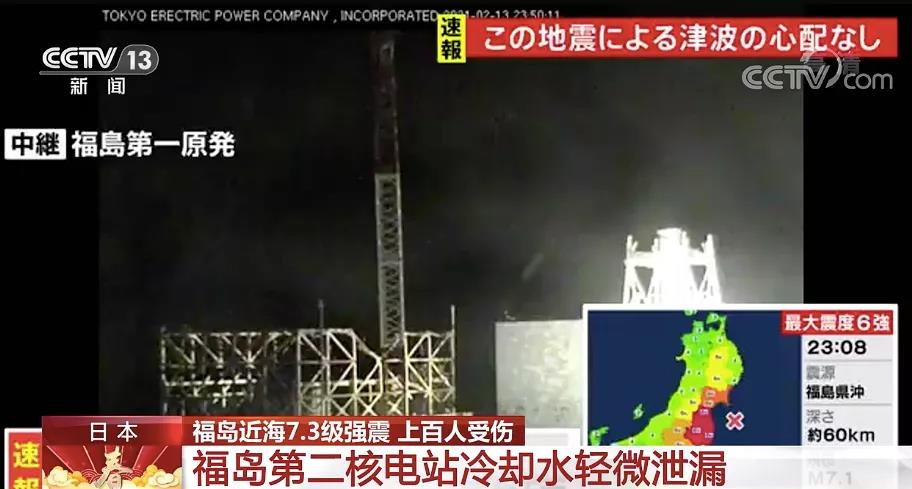
However, according to NHK TV, the cooling water used to store nuclear fuel in Unit 1 of Fukushima No.2 Nuclear Power Plant leaked slightly, but the radiation amount was said to be very low.
Suga Yoshihide instructed to spare no effort in disaster relief.
After the earthquake, the Japanese government set up a bureaucratic countermeasure room in the crisis management center of the Prime Minister’s official residence, a disaster prevention headquarters in the police department, and disaster countermeasures headquarters in Fukushima and Miyagi counties.
Japanese Prime Minister Suga Yoshihide instructed to grasp the disaster situation as soon as possible, and hoped that all localities would cooperate closely and spare no effort in disaster relief. Japanese Defense Minister Nobuo Kishida has asked the Self-Defense Forces to do a good job in disaster response.